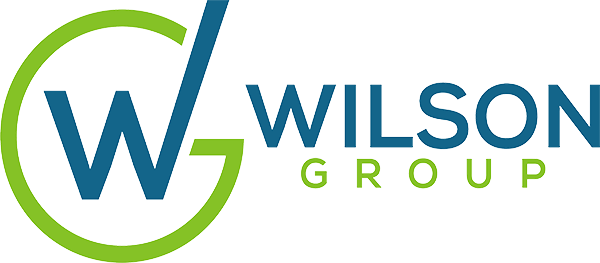Organizations are dealing with a variety of workplace changes during this “Interim Normal”. This includes employees who are wearing protective gear and/or social distancing while working in a company facility, employees working remotely and employees working in situations serving the public.
This is a good time for organizations to consider if a recognition program is appropriate to start or revisit and revise during this “interim normal” and beyond. Recognition is a process to positively acknowledge employee contributions relative to the situation and the employees.
The elements of recognition address:
- Providing feedback to employees: verbal, written and a public recognition presentation
- Using meaningful nonfinancial/symbolic or financial rewards based on what is being recognized: certificates, gift card, cash or merchandise with values ranging from minimal value to thousands of dollars
- Timing feedback and rewards based on what is being recognized: on the spot to an annual event
- Reinforcing company culture and behaviors
- Creating award criteria that represents performance that is above and beyond what is expected
During these times of change and uncertainty in the workplace, we suggest a systematic approach to revamping or developing these programs.
- Business Need
First, step back to the business situation: what problem are you trying to solve or what goal are you trying to reach? Take the time to define the goals and objectives of the plan design or redesign initiative. Clearly articulating and documenting recognition goals and objectives to all those involved early and upfront will form the foundation for the recognition criteria and rewards.
One example is the desire to recognize your front-line workers who have put themselves in harm’s way. The business issue is to retain and motivate employees to deal with the stress and fear of catching the virus. I spoke with one front-line employee recently who said it is very hard for her to get herself motivated to go to work, not knowing when and how it will end. She is dealing with unruly customers who are not following the guidelines for social distancing and complaining about the time in line.
Some employees not used to working from home may having difficulties adapting to working remotely, while others have been highly productive, innovative, creative and resourceful.
If your business has plants or distribution centers with employees in close contact, safety is a significant focus. Prior to Covid-19, your organization may have already expected employees to act safely, report safety issues and work on a safety committee. Now, safety is extended to conditions that limit the spread of a highly contagious virus. You may want to recognize where employees have gone above and beyond in compliance or suggesting new ways to create a safer environment.
- Recognition Criteria
The purpose of this step is to define “above and beyond performance” that is not covered by another one of your reward programs. One of the easiest ways to get this done is to gather a group of managers together for a brainstorming session. Then meet a second time with the same managers to evaluate and clarify the criteria and descriptions. Identify any criteria that could lead to unintended consequences.
- Eligibility
Determine what job functions and levels are a good fit for the recognition criteria you have developed. Recognition is not as common at higher levels of the organization but in most cases other levels of supervisors and managers are eligible.
- Tiered Recognition
This step involves identifying what criteria best fits for the phases of different business situations: stage 1: “shelter in place/essential work/flatten the curve” timing (spring); stage 2: “getting back to business” (summer) and stage 3: the new normal (fall to winter). You may have a spot bonus program for stage 1 and an end of year award (higher tier) for stage 3 such as a cash award for those who have sustained or had multiple examples of the behaviors and results you want to reward. In other words, recognizing the best of the best at year end.
- Financial and Non-Financial Rewards
What will be the financial and non-financial rewards? The most common rewards are spot bonus programs. The time between the behavior and the time of the award is extremely short for these programs. It is important to understand what will be meaningful to the eligible employee. The most common financial rewards are gift cards and merchandise programs where an employee can pick out something meaningful to them. You don’t want to give an employee a Starbucks gift card if they only like Dunkin Donuts. We have had clients with a “high praise” environment, distribute questionnaires to employees to ask them about their life and preferences so that their awards are meaningful.
It is also important to consider the tax implications of the reward. There are annual limits on the amount of gift cards that are not considered taxable but otherwise, you will want to consider if the program will have the best impact if it is net of withholding or paid by the employer.
Do not overlook the impact of non-financial or symbolic rewards (pins/badges). This could be the first tier in the program that includes financial rewards in the second tier. Feedback and non-financial rewards are effective when peers recognize other peers.
- Recognition Process
This step helps you see the “devil in the details”. In this step, you will explain the entire process. For example, who is giving the feedback, just the manager or can peers provide feedback and request a reward. How will payroll get notified of financial rewards?
- Funding
Typical funding for a complete, tiered strategic recognition program is .5% to 1% of eligible payroll. If funding at that level is not available, you will be focusing on a one tier program, such as a spot bonus program and limiting amount and the number of employees that can receive them.
- Communication
Consistent with any rewards program, implementation and communication is important for the program to make the intended impact. The program needs to have a strong delivery and understanding by those giving the feedback and those receiving it. In the end, recognition that is designed and communicated effectively can create significant impact on your culture and business for relatively low cost.
Summary
A strategic approach to recognition will yield a low-cost reward program that will motivate the behaviors and results that contribute to business performance and enhance employee engagement. The eight steps described in this article can be easily and quickly accomplished with the right project team. Because there is so much uncertainty, the program should address the different phases of work life we are anticipating in 2020 and beyond and be flexible to adjust to changing circumstances.

